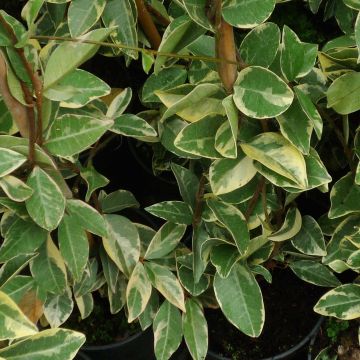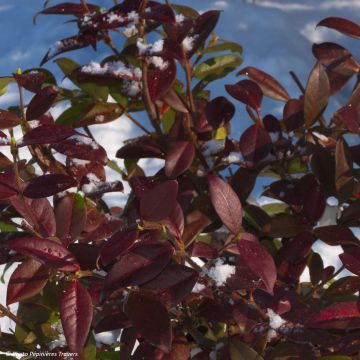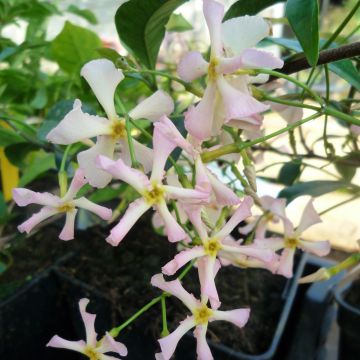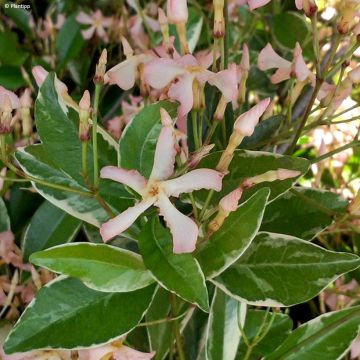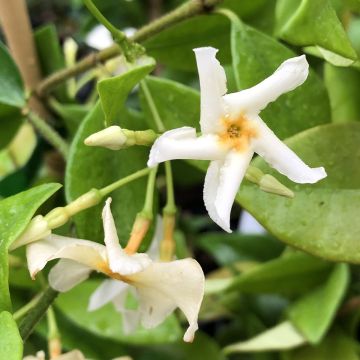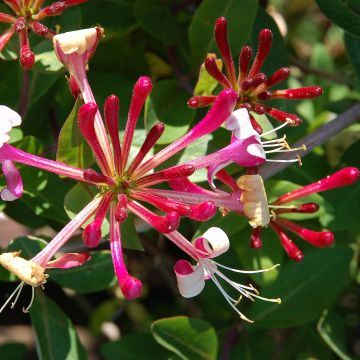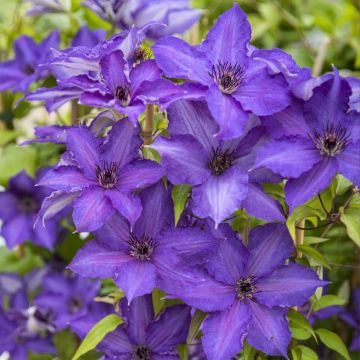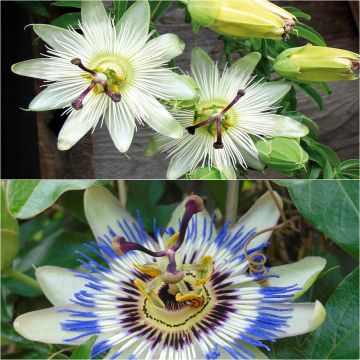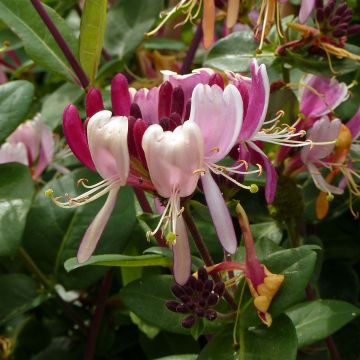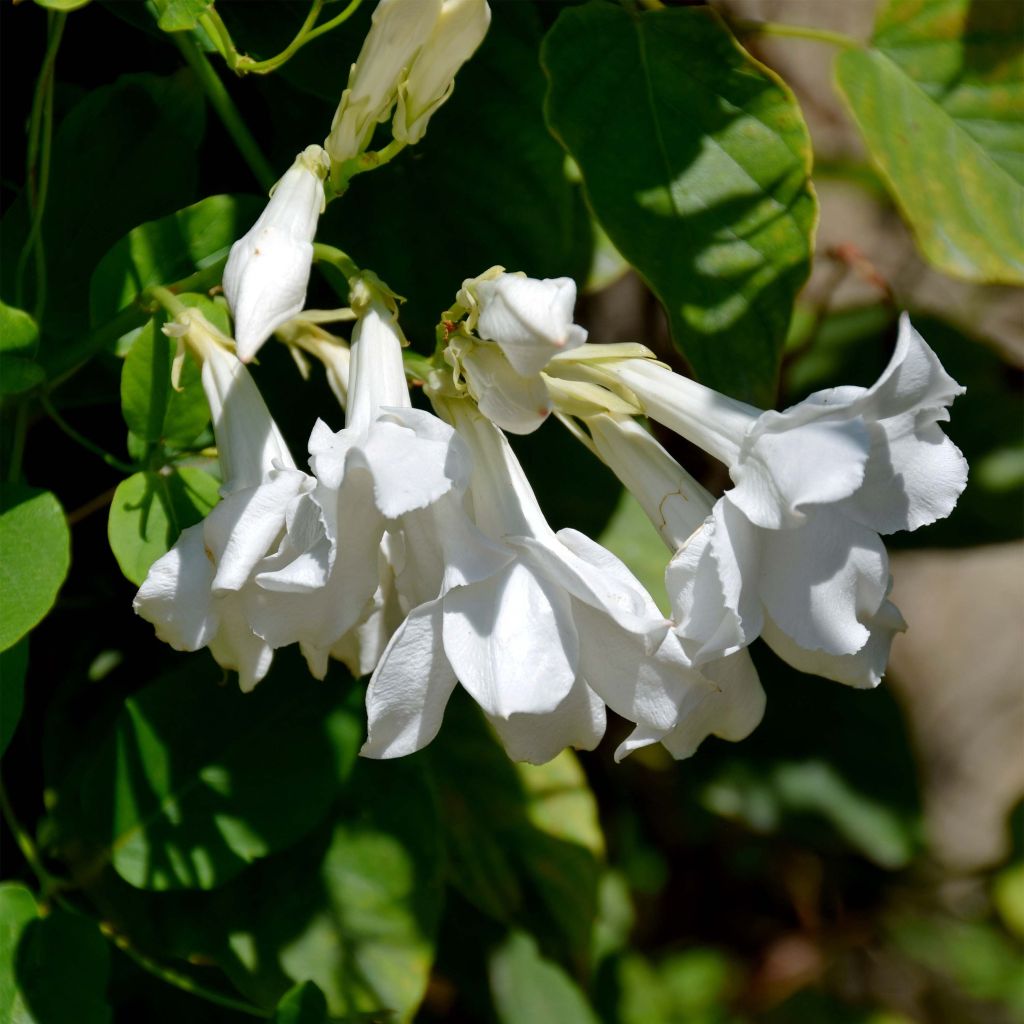

Mandevilla laxa
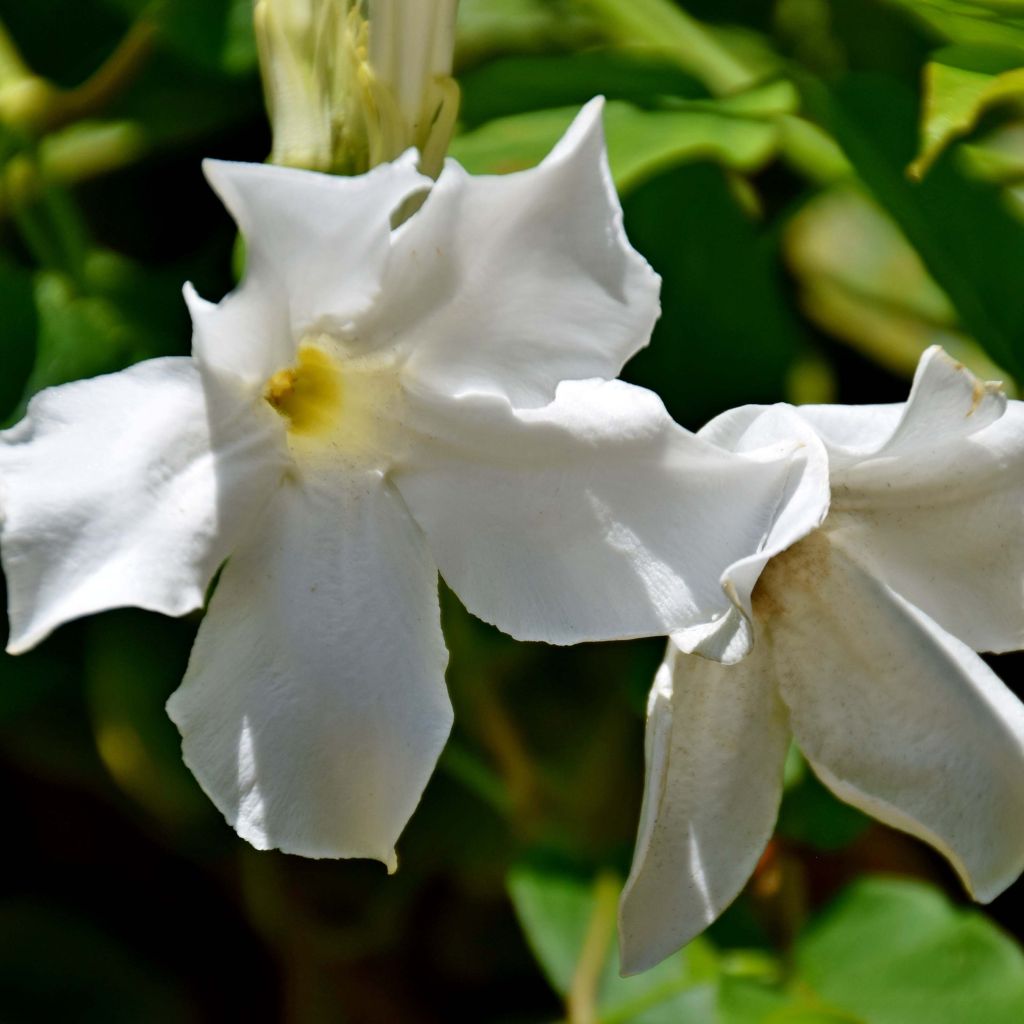

Mandevilla laxa


Mandevilla laxa


Mandevilla laxa
Mandevilla laxa
Mandevilla laxa
Chilean Jasmine, White Dipladenia
Why not try an alternative variety in stock?
View all →This plant carries a 6 months recovery warranty
More information
We guarantee the quality of our plants for a full growing cycle, and will replace at our expense any plant that fails to recover under normal climatic and planting conditions.
From €5.90 for pickup delivery and €6.90 for home delivery
Express home delivery from €8.90.

Does this plant fit my garden?
Set up your Plantfit profile →
Description
The Mandevilla laxa (or suaveolens), the Chilean Jasmine, is a beautiful deciduous South American rambler that should be seen more often in our gardens spared by heavy frosts. In its native mountains, temperatures a few degrees below zero are not uncommon in winter. It charms with its accommodating nature and endless fragrant white summer flowering at the end of the season, with its beautiful autumn foliage in shades of brown. Its funnel-shaped flowers, whose sweet scent is most noticeable in the evening, bloom in small clusters that renew throughout the summer if the plant does not lack water. Its rambling stems wrap around any support, climbing a pergola, a trellis, or a large bush. Continental gardeners will have no trouble growing it in a large pot on the terrace or balcony, as long as they store it away in winter.
The Chilean jasmine is a rambling climbing plant with a tuberous root from the Apocynaceae family. It is related to Trachelospermum, periwinkles, Alamanda, and Dipladenia, the summer glory of our flowering pots. It is naturally present from southern Bolivia and Ecuador to northern Argentina and Chile. The hardiness of a mature plant is estimated at -8, or even -10°C (14°F) at the lowest without winter protection, with the plant regrowing from the stump if the aboveground vegetation has been destroyed. Some sources claim it can regrow after a brief freeze of -12 °C (10.4°F) (late at night).
The Mandevilla suaveolens grows quite rapidly, producing long flexible stems that lignify quickly, with its vegetation eventually covering about 3.50m (11ft) or even 4m (13ft) in all directions in open ground and a favourable climate. The branches are adorned with pairs of opposite leaves, 6 to 7cm (2 to 3in) long, with a slightly undulated entire blade shaped like an elongated ace of spades or heart. Their colour is a matte medium green. Before falling, late in autumn, the foliage takes on shades of brownish-orange, a rather unusual colour that stands out in the garden. The foliage remains evergreen in winter if temperatures do not drop below -5°C (23°F).
The very long flowering period begins in early June and does not end until September-October. The flowers, which stand out well from the foliage, are gathered in clusters of funnel-shaped 8 to 12 white flowers with a diameter of 5cm (2in). They open successively or in groups of 2 or 3 at a time. Their scent can be detected several metres away, especially in the evening. This flowering, which attracts pollinating insects, gives way to green fruits that resemble two green beans joined at their ends. They contain numerous seeds with bristles. Like many plants in the Apocynaceae family, the Chilean jasmine contains alkaloids that are toxic to humans.
Mandevilla laxa is one of the most exciting climbers in mild regions: it perfumes summer evenings while preserving winter sunlight on the patio. To surround it, imagine Mexican orange trees, shrubby lavenders, and ceanothus creeping. You can also make it climb on a small tree or a trellis against an exposed wall. Or even on a pillar, a post. Its branches will intertwine with those of clematis, honeysuckle, or climbing Solanum in mild climates.
Report an error about the product description
Mandevilla laxa in pictures




Plant habit
Flowering
Foliage
Botanical data
Mandevilla
laxa
Apocynaceae
Chilean Jasmine, White Dipladenia
South America
Other Star Jasmine - Trachelospermum
Planting and care
Plant the Mandevilla laxa in open ground in regions spared from heavy frosts or in a considerable pot (minimum 50 litres) to be stored during winter in colder areas. In this case, provide a trolley to move the pot if you need to overwinter it.
Plant it preferably in spring to allow it to establish and strengthen before winter. Choose a very sunny exposure (or partial shade in hot climates). Plant it in deep, loose, fertile, healthy soil sheltered from cold winds. Once well established, after two years of cultivation, it will tolerate occasional frosts of around -10 °C (14°F). Protect young plants by wrapping the base of the plant with a thick winter covering. The tolerant Mandevilla suaveolens thrives in soil with limestone. It enjoys gardens where it finds warmth and sun in summer while benefiting from summer rains. As it tolerates relative drought, it also performs well in hot climates, where it will appreciate a generous watering every 15 days, mainly to support its flowering.
Water during summer or in case of drought during the first two years to help the plant establish itself. Once the roots have grown deep enough into the soil, they will be managed independently. During growth, water once or twice a week and optionally provide liquid fertiliser twice a month. In autumn, a slow-release organic fertiliser can be applied and lightly buried by scratching at the base of the plant, starting from the second year.
Its fragile, rambling stems tend to form 'buns' and curl upon themselves: it is sometimes helpful to guide and loosely tie them to their support.
Growing in a pot requires lighter, better-drained soil (providing a layer of gravel or clay pellets at the bottom of the perforated pot), regular fertiliser application, and frequent watering throughout its growth and flowering period. In cold regions, you can prune it in autumn, after the leaves have fallen, to make it easier to overwinter in a bright but unheated room.
Planting period
Intended location
Care
-
, onOrder confirmed
Reply from on Promesse de fleurs
Summer flowering climbers
Haven't found what you were looking for?
Hardiness is the lowest winter temperature a plant can endure without suffering serious damage or even dying. However, hardiness is affected by location (a sheltered area, such as a patio), protection (winter cover) and soil type (hardiness is improved by well-drained soil).

Photo Sharing Terms & Conditions
In order to encourage gardeners to interact and share their experiences, Promesse de fleurs offers various media enabling content to be uploaded onto its Site - in particular via the ‘Photo sharing’ module.
The User agrees to refrain from:
- Posting any content that is illegal, prejudicial, insulting, racist, inciteful to hatred, revisionist, contrary to public decency, that infringes on privacy or on the privacy rights of third parties, in particular the publicity rights of persons and goods, intellectual property rights, or the right to privacy.
- Submitting content on behalf of a third party;
- Impersonate the identity of a third party and/or publish any personal information about a third party;
In general, the User undertakes to refrain from any unethical behaviour.
All Content (in particular text, comments, files, images, photos, videos, creative works, etc.), which may be subject to property or intellectual property rights, image or other private rights, shall remain the property of the User, subject to the limited rights granted by the terms of the licence granted by Promesse de fleurs as stated below. Users are at liberty to publish or not to publish such Content on the Site, notably via the ‘Photo Sharing’ facility, and accept that this Content shall be made public and freely accessible, notably on the Internet.
Users further acknowledge, undertake to have ,and guarantee that they hold all necessary rights and permissions to publish such material on the Site, in particular with regard to the legislation in force pertaining to any privacy, property, intellectual property, image, or contractual rights, or rights of any other nature. By publishing such Content on the Site, Users acknowledge accepting full liability as publishers of the Content within the meaning of the law, and grant Promesse de fleurs, free of charge, an inclusive, worldwide licence for the said Content for the entire duration of its publication, including all reproduction, representation, up/downloading, displaying, performing, transmission, and storage rights.
Users also grant permission for their name to be linked to the Content and accept that this link may not always be made available.
By engaging in posting material, Users consent to their Content becoming automatically accessible on the Internet, in particular on other sites and/or blogs and/or web pages of the Promesse de fleurs site, including in particular social pages and the Promesse de fleurs catalogue.
Users may secure the removal of entrusted content free of charge by issuing a simple request via our contact form.
The flowering period indicated on our website applies to countries and regions located in USDA zone 8 (France, the United Kingdom, Ireland, the Netherlands, etc.)
It will vary according to where you live:
- In zones 9 to 10 (Italy, Spain, Greece, etc.), flowering will occur about 2 to 4 weeks earlier.
- In zones 6 to 7 (Germany, Poland, Slovenia, and lower mountainous regions), flowering will be delayed by 2 to 3 weeks.
- In zone 5 (Central Europe, Scandinavia), blooming will be delayed by 3 to 5 weeks.
In temperate climates, pruning of spring-flowering shrubs (forsythia, spireas, etc.) should be done just after flowering.
Pruning of summer-flowering shrubs (Indian Lilac, Perovskia, etc.) can be done in winter or spring.
In cold regions as well as with frost-sensitive plants, avoid pruning too early when severe frosts may still occur.
The planting period indicated on our website applies to countries and regions located in USDA zone 8 (France, United Kingdom, Ireland, Netherlands).
It will vary according to where you live:
- In Mediterranean zones (Marseille, Madrid, Milan, etc.), autumn and winter are the best planting periods.
- In continental zones (Strasbourg, Munich, Vienna, etc.), delay planting by 2 to 3 weeks in spring and bring it forward by 2 to 4 weeks in autumn.
- In mountainous regions (the Alps, Pyrenees, Carpathians, etc.), it is best to plant in late spring (May-June) or late summer (August-September).
The harvesting period indicated on our website applies to countries and regions in USDA zone 8 (France, England, Ireland, the Netherlands).
In colder areas (Scandinavia, Poland, Austria...) fruit and vegetable harvests are likely to be delayed by 3-4 weeks.
In warmer areas (Italy, Spain, Greece, etc.), harvesting will probably take place earlier, depending on weather conditions.
The sowing periods indicated on our website apply to countries and regions within USDA Zone 8 (France, UK, Ireland, Netherlands).
In colder areas (Scandinavia, Poland, Austria...), delay any outdoor sowing by 3-4 weeks, or sow under glass.
In warmer climes (Italy, Spain, Greece, etc.), bring outdoor sowing forward by a few weeks.



































